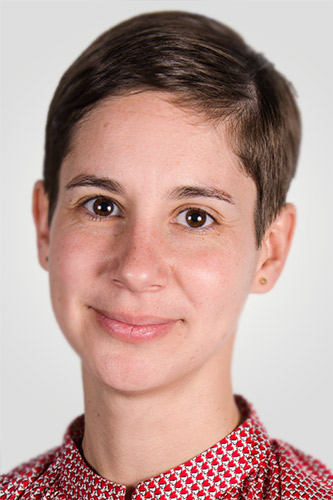

Brand Protection |
Sponsored by |

|



 On January 1, 2021, the United Kingdom officially ended the transition period and is no longer subject to European Union rules. The U.K. had been part of the EU for 47 years, or almost two generations. Comprehending the impact, the changes, the new ruling, and compliance will take some time. But in a world where online shopping, online banking, and communication is growing at lightning speed, we need clarity on key digital assets - the basic domain name.
On January 1, 2021, the United Kingdom officially ended the transition period and is no longer subject to European Union rules. The U.K. had been part of the EU for 47 years, or almost two generations. Comprehending the impact, the changes, the new ruling, and compliance will take some time. But in a world where online shopping, online banking, and communication is growing at lightning speed, we need clarity on key digital assets - the basic domain name.
 The International Trademark Association's Blockchain Subcommittee is interested in meeting companies working on Blockchain applications related to intellectual property. The Blockchain Subcommittee's mission is to explore the use of blockchain technology in trademark prosecution, maintenance, protection, and practice, including the opportunities and threats to the value of trademarks, brands, and consumer trust in emerging blockchain technologies.
The International Trademark Association's Blockchain Subcommittee is interested in meeting companies working on Blockchain applications related to intellectual property. The Blockchain Subcommittee's mission is to explore the use of blockchain technology in trademark prosecution, maintenance, protection, and practice, including the opportunities and threats to the value of trademarks, brands, and consumer trust in emerging blockchain technologies.
 When a brand goes so far as to ask a domain name registrar for Whois (the registration contact details) of a potentially abusive domain name, there's likely a lot at stake. Most often, the request is prompted by consumer safety concerns, such as the risk to consumers posed by a malicious site. Other times, the demand has a simple goal: to have a dialog with the registrant about the use of trademarks or other intellectual property in order to avoid extreme action.
When a brand goes so far as to ask a domain name registrar for Whois (the registration contact details) of a potentially abusive domain name, there's likely a lot at stake. Most often, the request is prompted by consumer safety concerns, such as the risk to consumers posed by a malicious site. Other times, the demand has a simple goal: to have a dialog with the registrant about the use of trademarks or other intellectual property in order to avoid extreme action.
 Clarivate has once again surveyed global business leaders about the importance of domain names to their organizations, including the role of domains as intellectual property (IP) assets. The 2020 survey followed up on our 2019 survey, revealing key year-over-year trends in how organizations manage, secure and budget for domain names. In this blog, we review key trends from the new report.
Clarivate has once again surveyed global business leaders about the importance of domain names to their organizations, including the role of domains as intellectual property (IP) assets. The 2020 survey followed up on our 2019 survey, revealing key year-over-year trends in how organizations manage, secure and budget for domain names. In this blog, we review key trends from the new report.
 The first part of this series explained how Amendment 35 to the NTIA-Verisign cooperative agreement is highly offensive to the public interest. But the reasons for saving the Internet are more fundamental to Western interests than a bad deal made under highly questionable circumstances. One of the world's foremost experts on conducting censorship at scale, the Chinese Communist Party's experience with the Great Firewall...
The first part of this series explained how Amendment 35 to the NTIA-Verisign cooperative agreement is highly offensive to the public interest. But the reasons for saving the Internet are more fundamental to Western interests than a bad deal made under highly questionable circumstances. One of the world's foremost experts on conducting censorship at scale, the Chinese Communist Party's experience with the Great Firewall...
 A few weeks ago, Appdetex published a blog with predictions for 2021, and admittedly, at the date of publication, there were already very clear indications that one prediction was already in flight. In our blog post, we'd said, "With the global domain name system failing to abate abuse, and, in fact, thwarting consumer protection, get ready for a patchwork of local laws targeting attribution and prosecution of bad actors... Get ready for some confusion and turmoil in the world of notice and takedown related to local laws and regulations."
A few weeks ago, Appdetex published a blog with predictions for 2021, and admittedly, at the date of publication, there were already very clear indications that one prediction was already in flight. In our blog post, we'd said, "With the global domain name system failing to abate abuse, and, in fact, thwarting consumer protection, get ready for a patchwork of local laws targeting attribution and prosecution of bad actors... Get ready for some confusion and turmoil in the world of notice and takedown related to local laws and regulations."
 UDRP Paragraph 4(c) states as a preamble that "[a]ny of the following circumstances, in particular, but without limitation, if found by the Panel to be proved based on its evaluation of all evidence presented, shall demonstrate your rights or legitimate interest to the domain name for purposes of Paragraph 4(a)(ii)." Three nonexclusive circumstances are listed.
UDRP Paragraph 4(c) states as a preamble that "[a]ny of the following circumstances, in particular, but without limitation, if found by the Panel to be proved based on its evaluation of all evidence presented, shall demonstrate your rights or legitimate interest to the domain name for purposes of Paragraph 4(a)(ii)." Three nonexclusive circumstances are listed.
 On January 14, 2021, the Office of the United States Trade Representative (USTR) released its 2020 Review of Notorious Markets for Counterfeiting and Piracy (the Notorious Markets List, or NML). This publication enumerates online and physical markets that have been reported to engage in trademark, counterfeiting, and copyright infringement at scale. For the first time, the NML documents show how internet platforms play a part in bringing illicit goods into the US.
On January 14, 2021, the Office of the United States Trade Representative (USTR) released its 2020 Review of Notorious Markets for Counterfeiting and Piracy (the Notorious Markets List, or NML). This publication enumerates online and physical markets that have been reported to engage in trademark, counterfeiting, and copyright infringement at scale. For the first time, the NML documents show how internet platforms play a part in bringing illicit goods into the US.
 I recently shared at a conference how a seasoned brand and fraud expert from one of the world's largest global financial institutions lamented a major attack where multiple fraudulent websites would pop up every single day. All attacks were launched from the same registrar and web hosting company, and no matter how much they reached out to these providers, they received the same reply: "we will pass on your request to the registrant or site owner," and then nothing happened.
I recently shared at a conference how a seasoned brand and fraud expert from one of the world's largest global financial institutions lamented a major attack where multiple fraudulent websites would pop up every single day. All attacks were launched from the same registrar and web hosting company, and no matter how much they reached out to these providers, they received the same reply: "we will pass on your request to the registrant or site owner," and then nothing happened.
 While smartphones were an integral part of our lives before 2020, now, as a result of the changes associated with COVID, our mobile devices are virtually "super-glued" to our hands. The worldwide pandemic has heavily influenced our lives. Based on our past experiences with digital brand protection and the trends we're currently seeing, we've made five predictions regarding the future of internet usage in 2021.
While smartphones were an integral part of our lives before 2020, now, as a result of the changes associated with COVID, our mobile devices are virtually "super-glued" to our hands. The worldwide pandemic has heavily influenced our lives. Based on our past experiences with digital brand protection and the trends we're currently seeing, we've made five predictions regarding the future of internet usage in 2021.